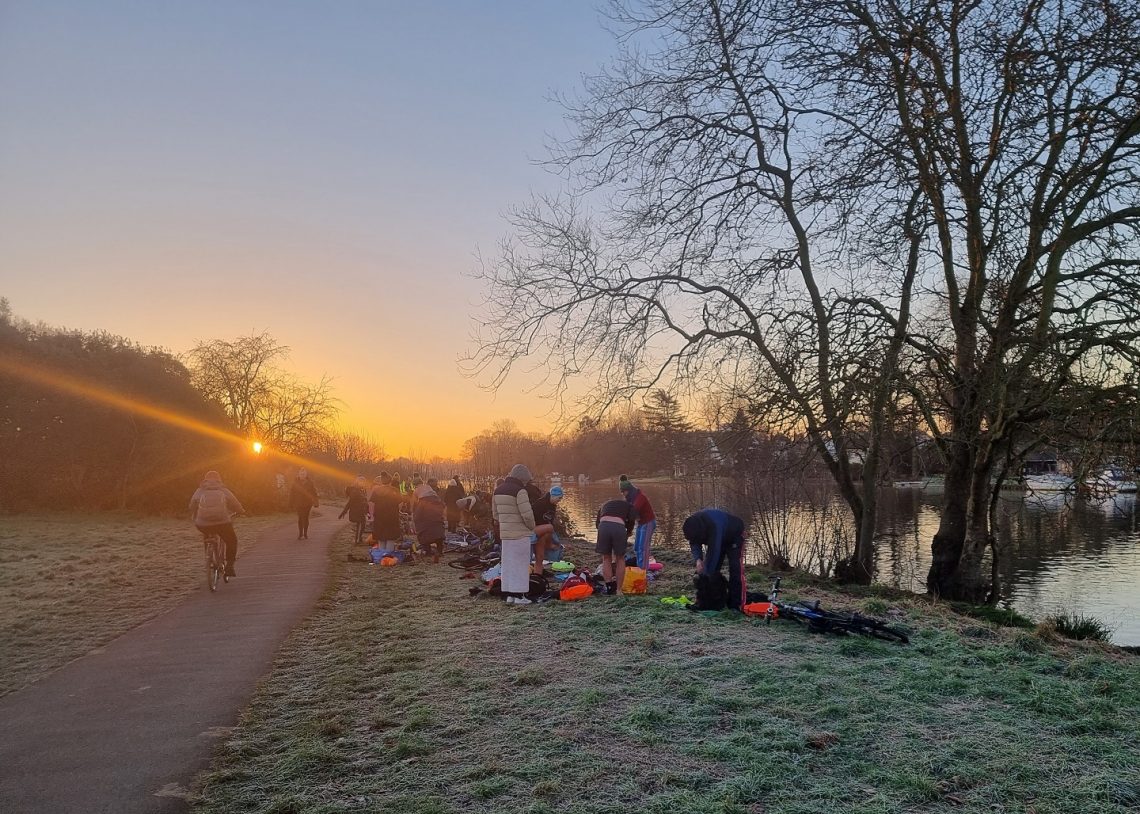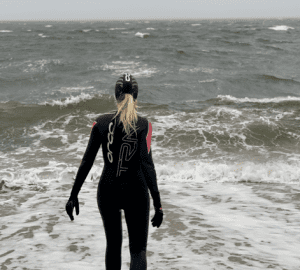
To avoid hypothermia, do sweat the small stuff
Even short winter dips need planning and preparation
I once watched a swimmer taking part in a long-distance cold water challenge, swimming laps in a marina at around 6 degrees. Each lap took a little longer, the arms moved more slowly, the legs sunk deeper. Then the person stopped moving and started sinking. Luckily there were wetsuited divers on hand who immediately hauled the swimmer out of the water and into a heated tent to recover.
Cold water swimming is bigger than ever. My local river swim spot is as busy in November as it was in the summer. On social media, I see an endless stream of pictures of people enjoying cold water swimming. The vast majority of these swims pass off without incident. Everyone has fun and goes home with their spirits lifted. It’s all good stuff.
But there is a darker side – I’m hearing an increasing number of reports of swimmers getting hypothermic. And that’s not so fun. If it continues, we may start hearing stories about swimmers not going home.
Until recently, I associated hypothermia with people pushing their limits, like the swimmer described above. My own experience of hypothermia happened in the summer while swimming the length of Windermere. But things I’ve seen recently have prompted a rethink. Obviously, staying in cold water for too long will lead to hypothermia, but it can catch you out in other ways too. Specifically, it’s not just the time you spend in the water that counts, but also what you do immediately before and after your swim or dip. And it’s here that the small stuff can make a difference. Get these wrong, and even a short swim can tip you into hypothermia. I recently witnessed this in a swimmer who was in the water for just 12 minutes.
So, while cold water swimming is fun and beneficial, it comes with risks attached, and you should therefore take the activity seriously and prepare accordingly.
First, consider your general physical and mental state. If you haven’t slept well, have recently over-indulged in alcohol, are fatigued, have eaten badly or are under stress, then take extra care. A cold water dip may be the perfect tonic, but these factors can all increase your risk of hypothermia. It may be better to postpone your dip for another day. Try to arrive well-rested and in good health. I also find it helps to drink a hot tea and eat a snack in the hour before swimming.
Second, pack thoroughly. Bring lots of warm clothes and include spares, and ensure you keep them dry. Dress warmly before you swim, and stay dressed as long as you can before swimming. I know some people like to stand around in their costumes before swimming as they say it reduces the discomfort when entering the water if their skin has already cooled. However, the reality is that you have started the journey towards hypothermia sooner if you do this.
Third, once you exit the water, focus your full attention on removing your wet stuff and dressing as quickly as possible. We’ve said this before, but it’s worth repeating. You usually feel amazing when you leave the water but if the air is cold or it’s windy, your body will continue cooling, and it cools faster while you’re wet. You can easily dip into hypothermia after you’ve left the water. I’ve seen people leaving the water and then, rather than dressing, doing exercises while still in their wet costumes. This seems foolish to me. Dress first, and then do your warming up exercises.
Finally, have an emergency plan that doesn’t rely on the emergency services. Ambulance waiting times can be long and the service is under enough pressure. They might not reach you on time to help – or you may pull one away from someone in greater need. Have you got somewhere warm to take a cold swimmer? And have you got extra layers, blankets, hot water bottles, warm drinks and snacks?
It’s worth making the distinction between a quick winter dip and a cold water endurance swim. The former is a fun activity, with relatively little risk (although obviously you can get into difficulty if you ignore the advice above). Cold water endurance swimming, and let’s define this as anything exceeding 10 to 15 minutes, or more than around 500m, in water of less than 10 degrees, is an extreme sport and needs to be treated as such. Don’t make the mistake of setting out for a winter dip and ending up doing a cold water endurance swim because you didn’t take care of the small stuff.
Taking safety seriously doesn’t reduce the fun of cold water swimming but can make all the difference in ensuring every dip has a happy ending.








